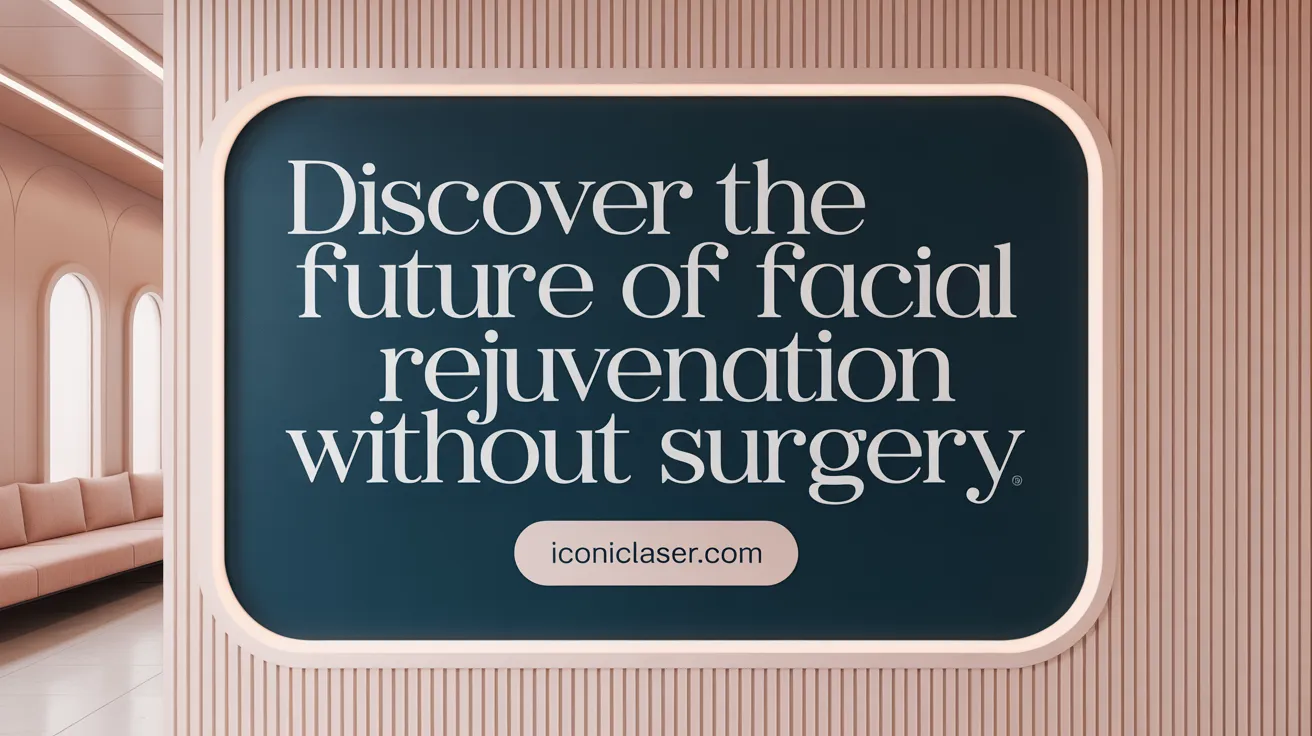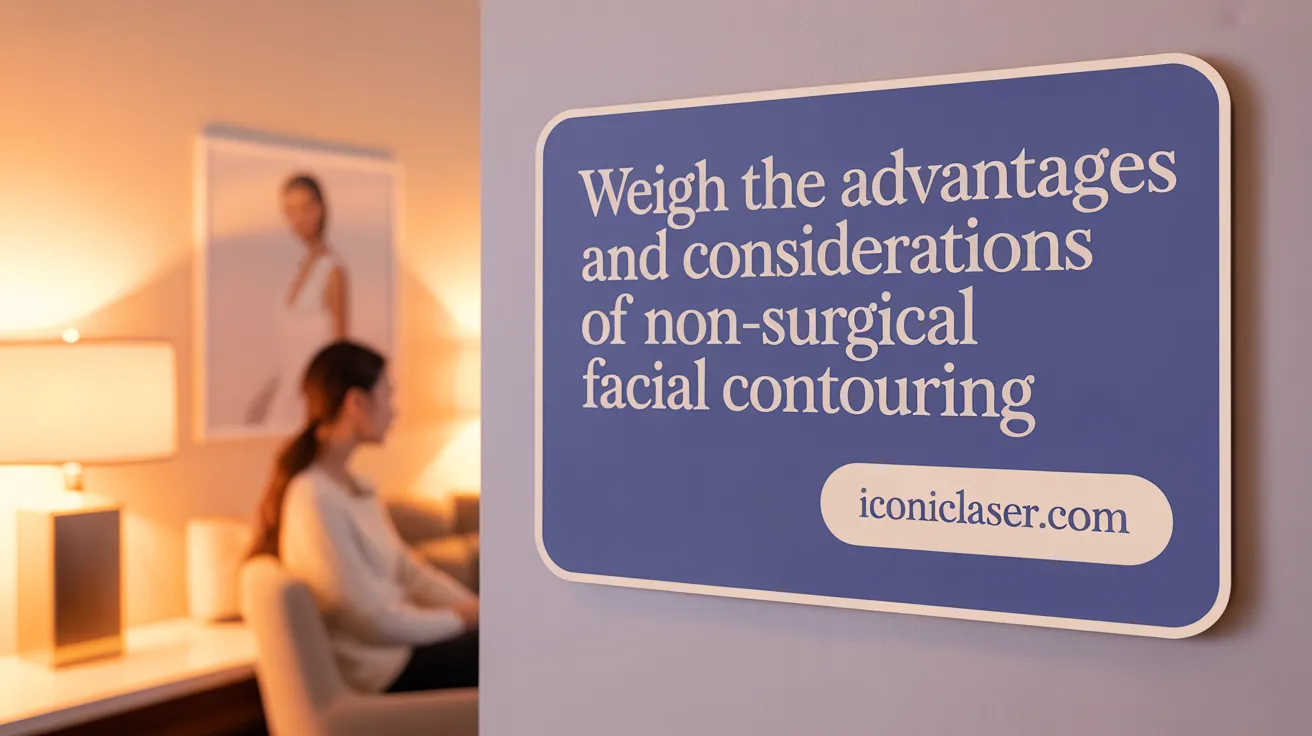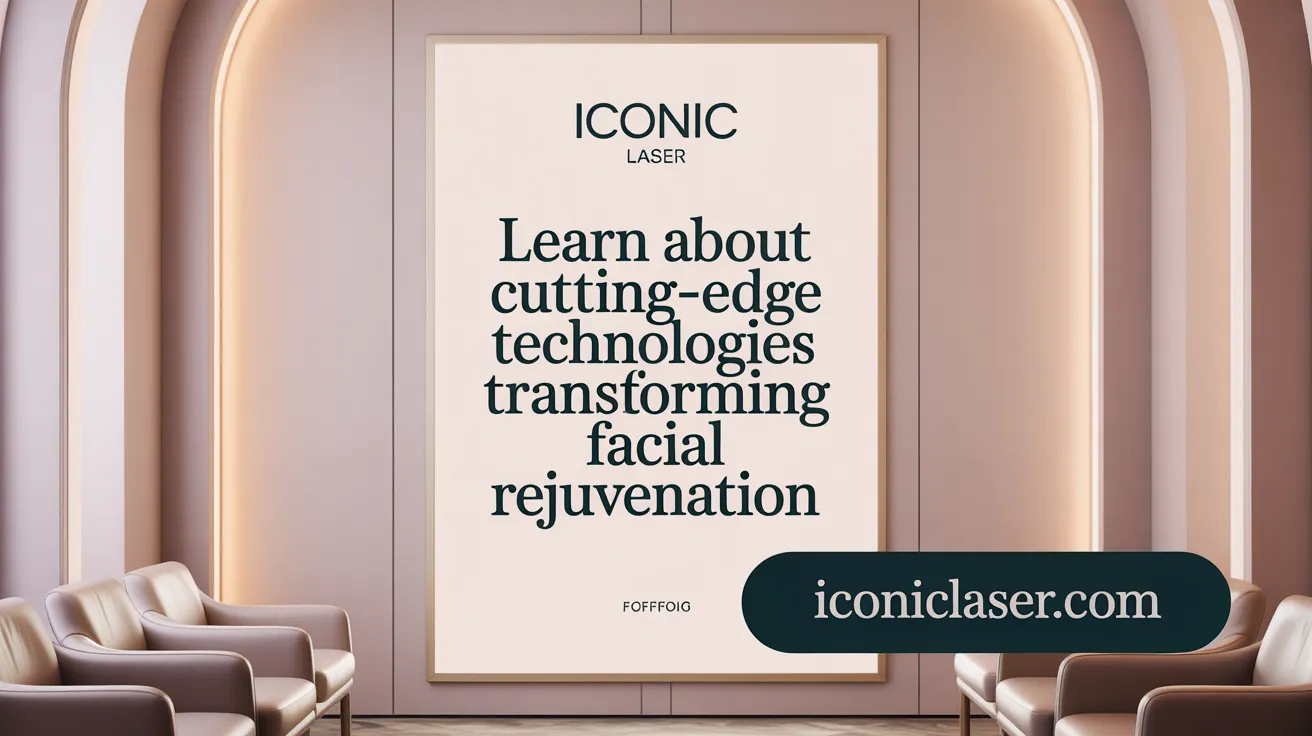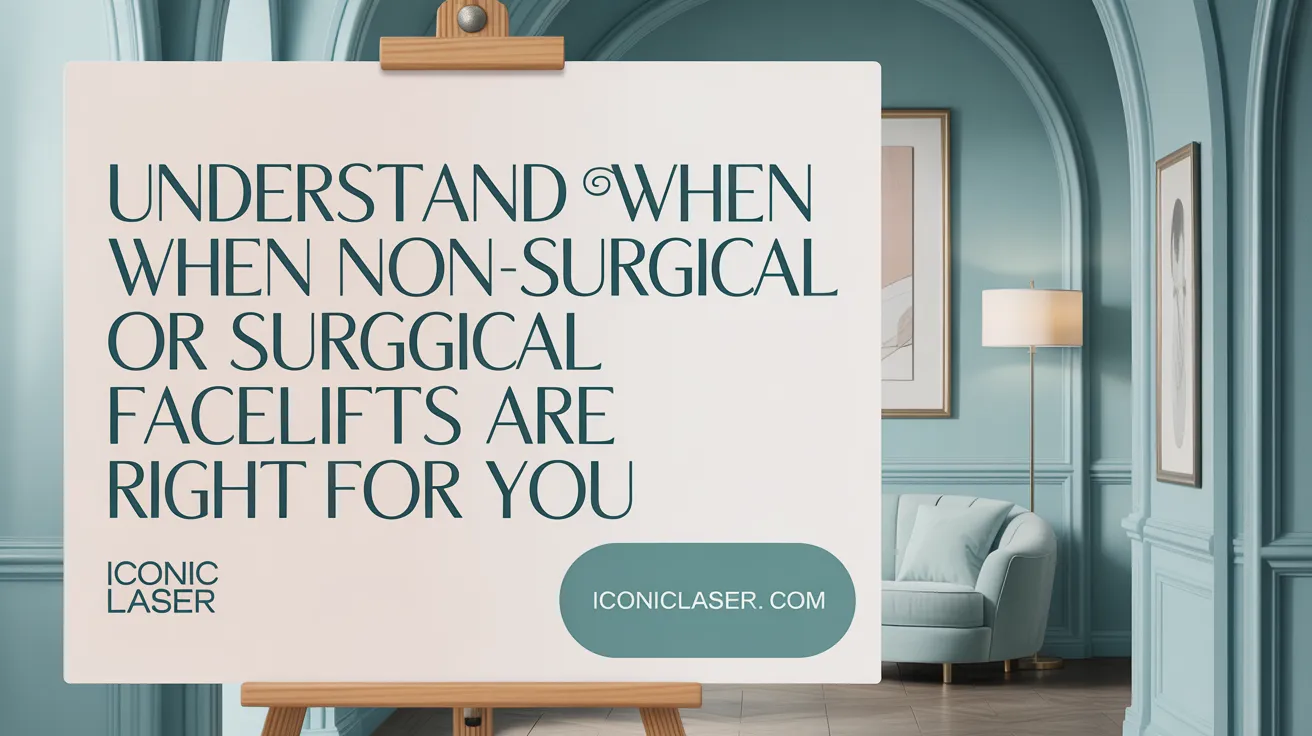The New Era of Facial Contouring
Advancements in medical aesthetics have revolutionized how we approach facial rejuvenation and contouring. Increasingly, individuals seek natural-looking enhancements without surgery, downtime, or significant risk. This article explores the latest non-surgical facial sculpting options, their benefits, what to expect, and how these innovative treatments can help achieve a refreshed and youthful appearance with minimal disruption to daily life.
What Is Non-Surgical Facial Sculpting?

What is a nonsurgical facelift and what techniques does it include?
A nonsurgical facelift is a set of Noninvasive facelift techniques or minimally invasive procedures designed to enhance facial appearance without the need for surgery. It uses methods such as Dermal fillers for facelift, Botulinum toxin injections benefits (like Botox), Chemical peels for skin improvement, Laser skin resurfacing procedure, Microdermabrasion benefits, and Microneedling for facial enhancement. These treatments address common signs of aging including Addressing sagging skin, Wrinkle reduction options, volume loss, and uneven texture. They do not require general anesthesia or large incisions and are typically performed in outpatient office settings.
How has facial contouring evolved with non-surgical techniques?
Facial contouring has greatly evolved with the rise of facial contouring without surgery. Techniques like dermal fillers for facial contouring, Sculptra collagen stimulation, Botox for facial slimming, and PDO thread lifts allow patients to reshape and define areas such as the cheekbones, jawline, and chin with minimal discomfort and downtime. These approaches provide subtle, natural-looking enhancements and have become increasingly popular for individuals seeking cosmetic improvements without the risks and recovery time of surgery.
Differences from surgical options
Unlike surgical facelifts or contouring procedures that involve incisions, anesthesia, and longer recovery, non-surgical facial sculpting offers a less invasive alternative. Results are generally temporary and require maintenance sessions, but benefits include reduced risks, quicker recovery, and lower costs. Non-surgical methods focus on stimulation of collagen, muscle relaxation, volume restoration, and skin tightening using energy-based or injectable treatments such as Radiofrequency (RF) skin tightening, Botulinum toxin injections, and laser therapies for skin tightening.
Popularity and patient demographics
Non-surgical facial sculpting has surged in popularity, with over 13 million minimally invasive cosmetic procedures performed in the US in 2020 alone. It appeals to a wide range of candidates, particularly those with mild to moderate signs of aging or those preferring less downtime. Patients typically seek treatments to achieve firmer and smoother skin results, younger-looking skin without surgery while maintaining their natural facial expressions and contours.
Common Non-Surgical Facial Sculpting Treatments

What are the main nonsurgical treatments for face contouring?
Nonsurgical facial contouring uses a variety of treatments to enhance and define facial features without surgery. The most common treatments include:
- Dermal fillers: Made from substances like hyaluronic acid and collagen stimulators, they add volume to cheeks, chin, and jawline, restoring youthful contours and smoothing wrinkles. Results typically last from six months to two years. Learn more about dermal fillers for facial contouring.
- Neurotoxin injections: Botox and similar products relax facial muscles, reducing wrinkles and slimming bulky jaw muscles to create a more defined lower face. See benefits of Botox for facial contouring.
- PDO thread lifts: Absorbable threads are inserted under the skin to physically lift sagging tissue while stimulating collagen production, improving firmness and producing natural-looking lifting effects. Read about PDO thread lifting.
- Radiofrequency (RF) skin tightening: Treatments such as FaceTite and Thermage heat deep skin layers to stimulate collagen and elastin, leading to firmer, tighter skin with minimal downtime. Explore radiofrequency skin tightening.
- Laser therapies: Use light energy to resurface the skin, improving texture and promoting collagen remodeling, which tightens loose skin and reduces fine lines. More on laser skin resurfacing procedures.
How do radiofrequency and ultrasound technologies work in skin tightening?
Radiofrequency and ultrasound treatments target deeper layers of the skin with controlled thermal energy. This heating process stimulates fibroblasts to produce collagen and elastin—key proteins responsible for skin structure and elasticity.
- Ultrasound technology (e.g., Ultherapy): Focuses energy precisely to lift and tone skin, particularly effective for the brow, chin, neck, and décolletage. Results develop gradually and are visible around 2 to 3 months post-treatment. See detailed information on Ultherapy ultrasound treatment.
- Radiofrequency treatments (e.g., FaceTite, Thermage): Heat dermal and subdermal layers to contract tissues, tighten skin, and reduce fat deposits. They offer immediate and progressive improvement with low risk and no significant recovery time. Learn about FaceTite Skin Tightening and Thermage Treatment.
Together, these technologies provide natural, noninvasive facial rejuvenation by restoring firmness and contour without the need for surgery or extensive downtime. For an overview, check out the Non-Surgical Skin Tightening resources.
Benefits and Limitations of Non-Surgical Facial Sculpting

Advantages over surgical facelifts
Non-surgical facial sculpting offers several appealing benefits compared to traditional surgical facelifts. These treatments typically avoid large incisions, general anesthesia, and hospital stays. This results in quicker recovery times and less disruption to daily life. Costs are lower, and procedures cause minimal pain or discomfort. Additionally, non-surgical options like dermal fillers for facelift, Botulinum toxin injections benefits, and Radiofrequency (RF) skin tightening treatments can achieve firmer and smoother skin results and younger-looking skin without surgery without extensive downtime or significant risks associated with surgery.
Risks and side effects
While generally safe, non-surgical facial treatments carry some risks. Common side effects include mild bruising, swelling, redness, and tenderness at the treatment sites. Rare complications can include infection, allergic reactions, skin burns, lumps, and asymmetry. However, these adverse effects are often short-lived and manageable, especially when treatments are performed by trained professionals using proper techniques. For further information, see Risks of nonsurgical facelifts and Side effects of noninvasive facelift.
Temporary vs long-lasting results
Non-surgical facial sculpting results are typically temporary. For example, dermal fillers may last from 6 months to 2 years depending on the type used, while Botox effects usually last around 3 to 4 months. Some procedures like Sculptra collagen stimulation and PDO thread lifts stimulate collagen production, providing longer-lasting improvements over several months. Maintenance treatments for facelift are generally needed to sustain optimal aesthetic outcomes.
Recovery time and patient suitability
Recovery from non-surgical facial treatments is minimal. Patients often experience mild redness or swelling that resolves within days, allowing them to resume normal activities immediately or shortly after treatment. These procedures suit individuals with mild to moderate skin laxity and volume loss who prefer subtle, natural enhancements without surgery. Patients with advanced sagging or those seeking dramatic changes might require surgical options instead. For more details, see Recovery from nonsurgical facelift and Ideal candidates for skin tightening.
Innovative Technologies Advancing Non-Surgical Facial Sculpting

How does High-Intensity Focused Ultrasound (HIFU) work for facial sculpting?
HIFU is a cutting-edge non-invasive aesthetic treatment that uses focused ultrasound waves to target the deep layers of the skin and subcutaneous fat. This technology stimulates collagen production at several depths, encouraging natural skin tightening and rejuvenation.
The thermal energy from HIFU not only tightens tissue but also disrupts fat cell walls, which are then naturally eliminated by the body's lymphatic system. Patients experience both immediate tightening effects and progressive improvements over 8 to 12 weeks.
This method requires no incisions or injections, demands minimal downtime, and is customizable to individual aesthetic goals like slimming, lifting, and contouring the face.
What are some proprietary combination treatments and advanced RF devices used?
Advanced radiofrequency (RF) skin tightening and combination treatments are elevating non-surgical facial sculpting. For instance, Evoke uses RF energy to contract skin fibers and reduce unwanted fat beneath the skin surface in the face and neck areas. This painless, non-invasive treatment works by stimulating collagen and elastin, essential for enhancing skin structure and elasticity, with immediate and gradual results without recovery time.
PDO thread lifts serve as a minimally invasive option that mechanically lifts sagging tissue using absorbable threads while simultaneously triggering collagen growth. This approach occupies a middle ground between injectable fillers and surgical facelifts, offering natural-looking rejuvenation with minimal downtime.
Moreover, proprietary combination treatments like the Tri-Zone Laser Lift procedure merge multiple energy-based modalities, including radiofrequency and laser therapies, to maximize facial rejuvenation effects. These treatments personalize care by combining technologies for skin tightening, fat reduction, and overall revitalization.
Together, these innovative technologies offer effective, safe, and natural enhancements for those seeking facial contouring without surgery.
Facial Areas Commonly Targeted and Corresponding Non-Surgical Options
What non-surgical options are available for jawline and chin contouring?
Jawline and chin contouring without surgery involves several effective approaches. Dermal fillers add volume and definition, enhancing the chin and jawline shape with results lasting months to years. Neurotoxin injections such as Botox relax the masseter muscles, which can slim a bulky jawline, offering a subtle slimming effect that lasts around three to four months.
Energy-based devices play a significant role in contouring. Radiofrequency treatments like FaceTite use heat to reduce fat and tighten skin in these areas, providing a minimally invasive option with gradual, natural results. Similarly, ultrasound therapies such as Ultherapy stimulate collagen production to lift and firm the skin around the chin and jawline.
These treatments typically require little to no downtime, making them attractive options for patients seeking a rejuvenated, sculpted appearance without surgery.
Are there non-surgical alternatives for cheek slimming and augmentation?
Patients seeking cheek slimming may consider neurotoxin injections, which relax jaw muscles to create a slimmer facial profile without removing cheek fat. Radiofrequency therapies can also reduce fat in the cheek area while promoting collagen production for tighter skin.
For cheek augmentation, dermal fillers and fat grafting serve as popular non-surgical options to restore or increase cheek volume, resulting in a youthful, balanced appearance. These approaches avoid the risks and recovery time of surgical buccal fat removal while delivering subtle yet effective enhancements.
Overall, these non-invasive methods allow for natural-looking improvements to facial contours with minimal discomfort or downtime.
Maintenance, Safety Considerations, and Choosing the Right Provider
What are the maintenance and aftercare requirements for non-surgical facial sculpting?
Non-surgical facial sculpting offers temporary results, so maintaining their benefits means committing to follow-up treatments regularly. Patients should also adopt a consistent skincare regimen that involves gentle cleansing, moisturizing, diligent sun protection, and avoiding smoking or excessive sun exposure to enhance outcomes.
Common side effects like swelling, redness, or bruising after treatments such as dermal fillers or botulinum toxin injections are normal and usually mild. These symptoms can usually be managed effectively with cold compresses or soothing ointments. However, if severe symptoms such as infection signs, persistent asymmetry, or unusual pain occur, patients are advised to seek prompt medical attention.
Why is it important to choose qualified providers for these treatments?
Selecting a qualified, experienced provider is critical to achieving safe and effective non-surgical facial treatments. Board-certified aesthetic physicians or trained cosmetic surgeons understand the nuances of facial anatomy and use precise techniques that minimize risks like infections, skin burns, lumps, or asymmetry.
Qualified practitioners conduct thorough consultations that assess individual anatomy, skin condition, and aesthetic goals. This enables the creation of personalized and tailored treatment plans, ensuring natural-looking improvements that suit each patient’s unique face.
Through skillful application and careful patient monitoring, qualified providers help patients enjoy the benefits of refreshed and rejuvenated facial appearance while reducing complications. This careful approach enhances overall patient satisfaction and confidence in non-invasive facial sculpting procedures.
Comparing Non-Surgical Sculpting With Surgical Options

How do non-surgical face sculpting treatments compare with mini facelifts?
Mini facelifts involve making small incisions around the ears to lift and tighten the underlying facial muscles. This surgical option focuses on sagging in the lower face and neck, offering longer-lasting and more dramatic results. However, it requires a recovery period of one to two weeks and is more invasive. Learn more about Mini facelifts benefits.
In contrast, non-surgical face sculpting includes treatments such as dermal fillers for facial contouring, Botox for facial slimming , PDO thread lifts, and energy-based devices that stimulate collagen production including Radiofrequency (RF) skin tightening. These methods enhance facial contours gradually with subtle and natural-looking improvements. They have minimal downtime and are best suited for individuals with mild to moderate signs of aging. Additional info on Non-Surgical Skin Tightening.
When might surgery be preferred over nonsurgical options?
Surgical intervention, such as a mini facelift, is generally preferred for patients experiencing advanced sagging skin or significant volume loss that cannot be effectively treated with non-surgical methods. Surgery provides more dramatic, durable changes but involves higher costs, increased risks, and longer recovery times. More on understanding Nonsurgical facelift overview and Body contouring overview.
Patient preferences, the severity of aging signs, and individual medical considerations play an essential role in deciding whether surgery or nonsurgical sculpting is the best choice. Those seeking immediate and marked changes might lean towards surgery, while those desiring a gentler approach with less downtime might opt for non-surgical treatments, as detailed in Facial contouring without surgery.
Patient preferences and recovery implications
Patients who prioritize shorter recovery periods and lower risks often choose non-surgical sculpting because treatments are performed in-office with minor side effects like mild swelling or bruising. On the other hand, patients willing to accept more downtime and invasiveness for long-lasting, more significant rejuvenation results might select mini facelifts.
Ultimately, the choice depends on individual goals, degree of facial aging, tolerance for recovery time, and desired outcome intensity. More insights are available through Mini facelifts benefits and Nonsurgical facelift overview.
Enhance Your Natural Beauty with Confidence
Non-surgical facial sculpting offers an exciting and accessible way to refresh and rejuvenate your appearance without the need for surgery. With a variety of innovative treatments available—from dermal fillers and Botox to radiofrequency and ultrasound therapies—patients can enjoy natural-looking enhancements tailored to their individual needs. While these procedures come with fewer risks and quicker recovery times, understanding their benefits, limitations, and maintenance requirements is key to achieving optimal results. Working with qualified professionals ensures safety and personalized care, empowering you to enhance your natural beauty confidently and comfortably.
